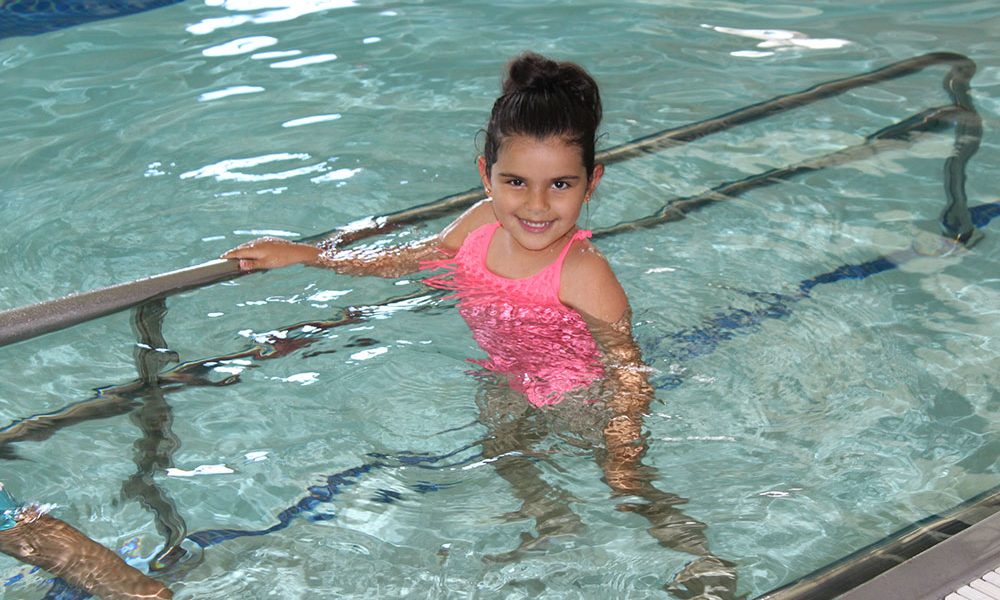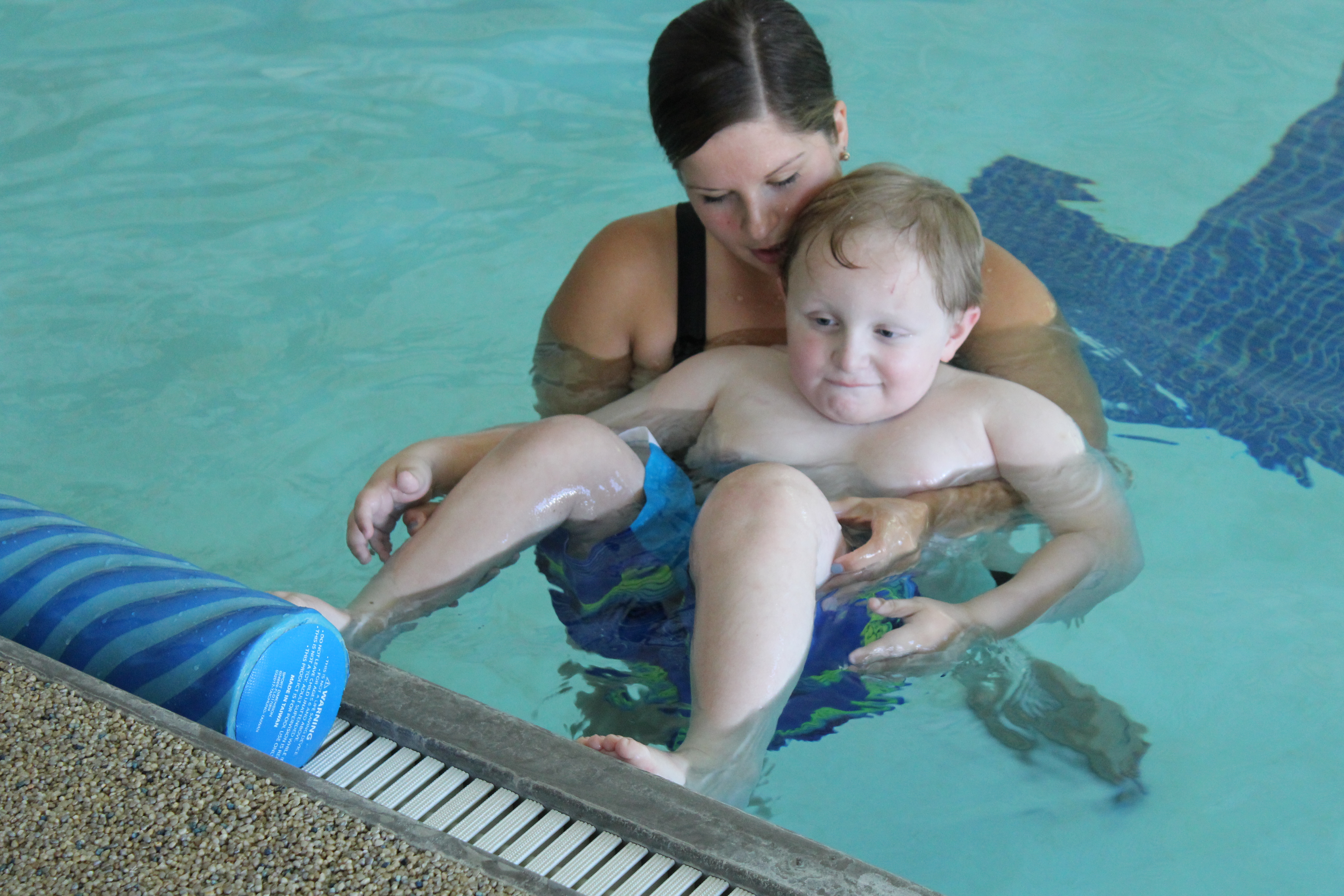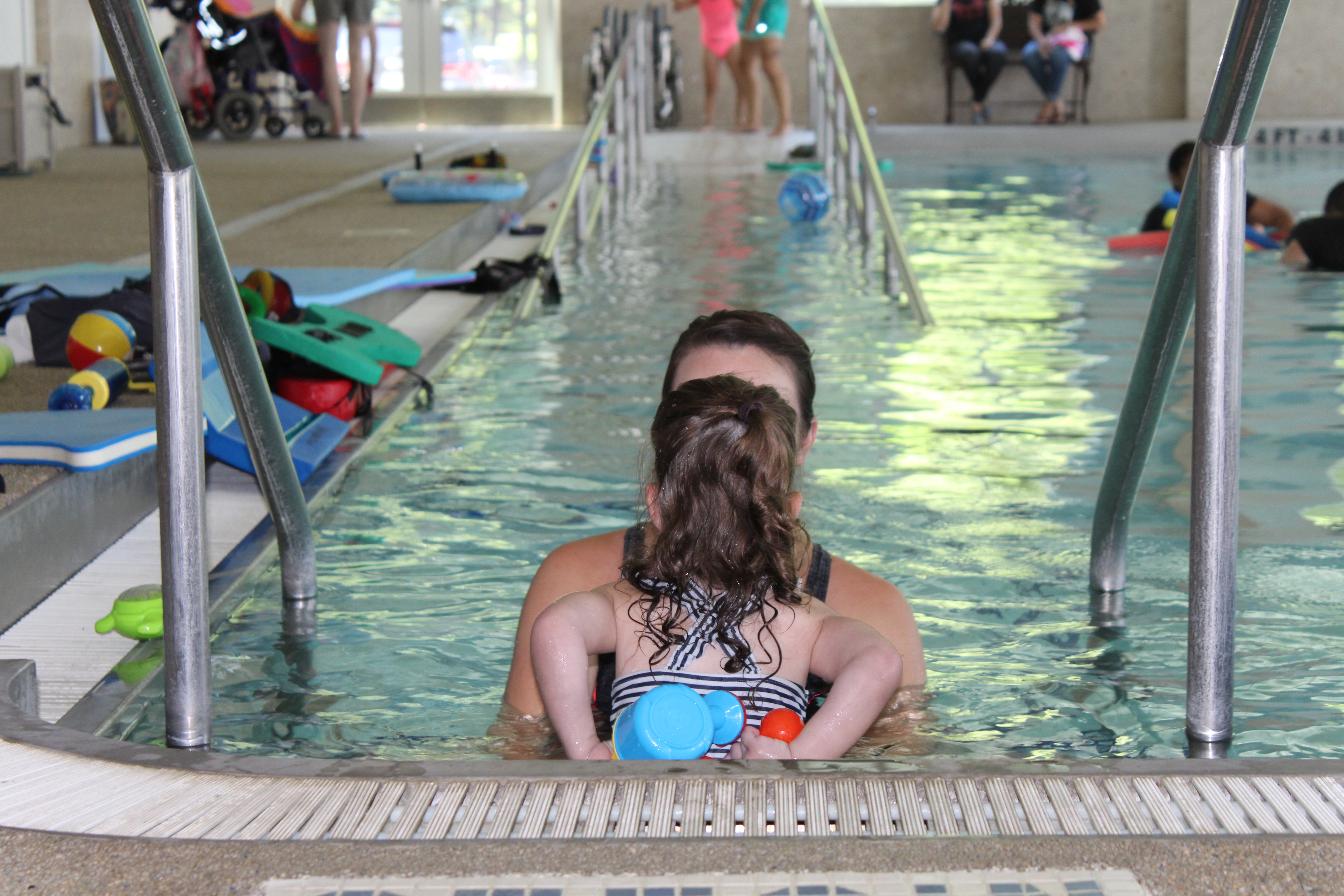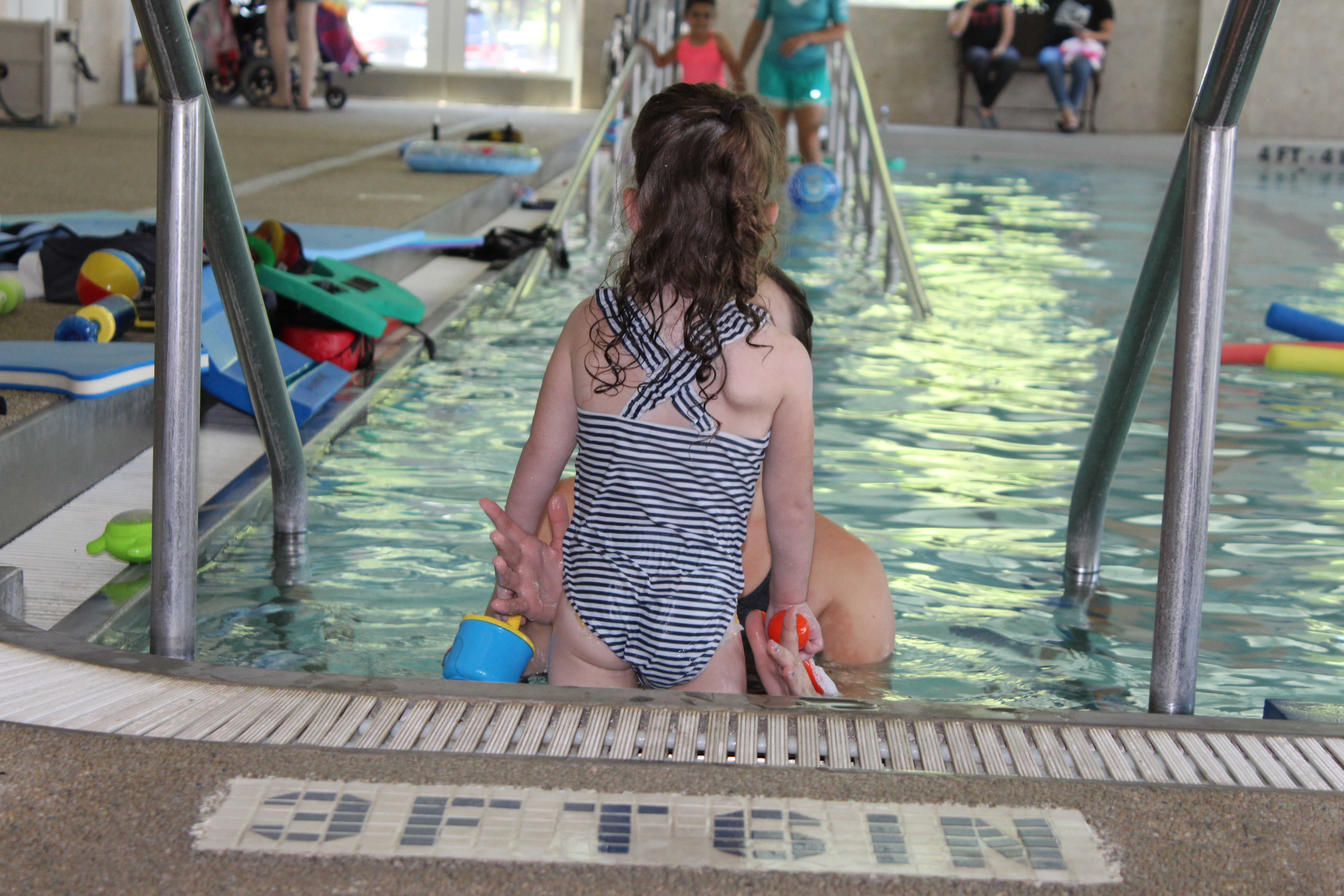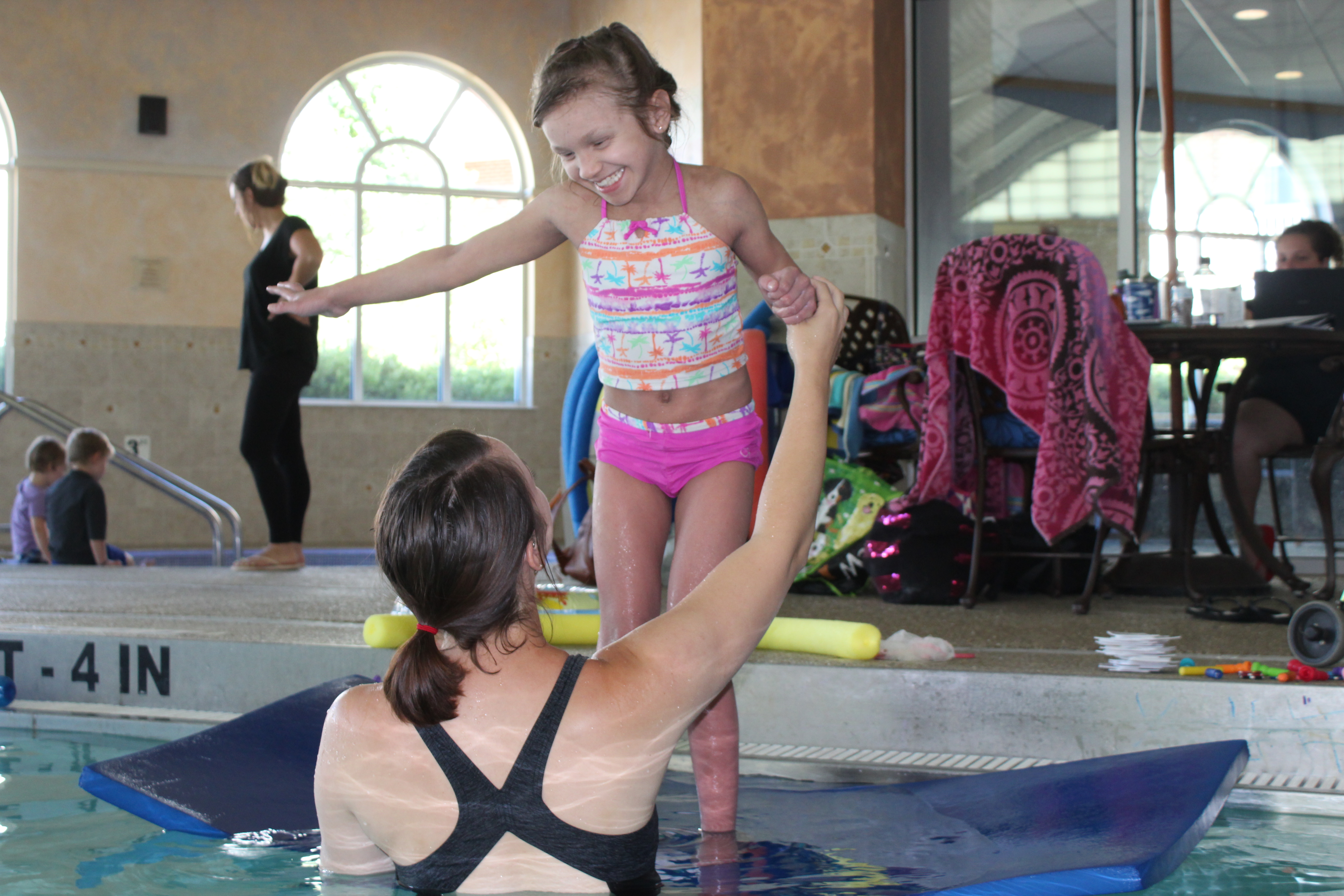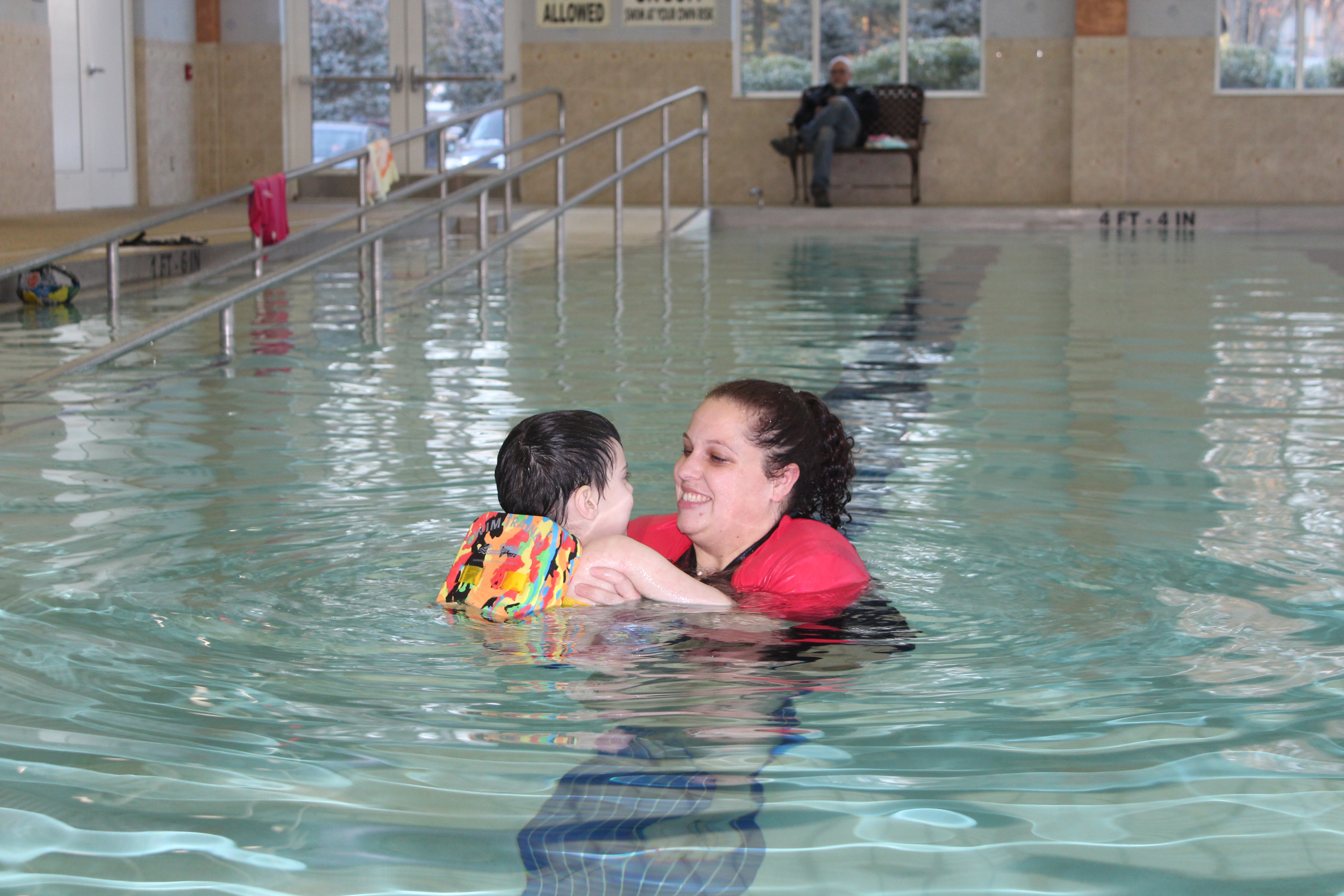Aquatic Exercises to Perform at Home
Aquatic therapy is an integral part of pediatric therapy. It allows for pediatric physical and occupational therapists to work on skills in the aquatic environment that are more challenging during land-based therapy. Aquatic therapy uses the properties of the water to achieve therapeutic gains and work on skills that may be too difficult to perform during land-based therapy.
As with any form of cardiovascular exercise, you reap significant benefits to your long-term health by swimming regularly. It can make your heart work more efficiently by making it stronger. A stronger heart pumps blood more efficiently, meaning you’ll gain improved circulation throughout your body (even your brain!). If you want to know other ways to improve your vascular health, learn more at the link.
Aquatic therapy can also help reduce pain, reduce edema, improve cardiovascular endurance and circulation, and assist patients with comorbidities including obesity, joint deterioration, and cardiac complications.
Summer is a great time to get into the pool to play and exercise with your child. You can help work on improving your child’s strength with some simple equipment at home. Pool noodles, kickboards, beach balls and amazon exercise balls, also motivating toys that your child enjoys. Below are some examples of various activities our aquatic therapists often perform during aquatic therapy sessions that can be tried at home!
Lower Extremity Strengthening Activities
Blast Offs:
- Blast offs help to improve lower extremity strengthening
- Hold the child so they are floating on their back in the water
- Have them place their feet on the side of the pool, and bend their knees all the way in
- Count down, and have them extend their legs and push off the pool edge as if they were “blasting off”
Stairs:
- The pool is a great environment to work on stair negotiation
- Have your child practice walking up and down the stairs in/out of the pool
- You can stand on the stair below them and support them at their trunk or hips if they need assistance
- They can use a railing at first, progressing to going up and down without a railing
- You can place toys at the top of the stairs for them to go and get each time they go up and down

Step Ups:
- Step-ups are a great way to work on lower extremity strengthening
- Have the child stand facing up the stairs. Have them place one foot on the step above, then step up with their other foot, and then step down.
- For example: have them place their right foot up on the stair, then step up and bring their left foot up onto the step, and then step down with their left foot. Repeat multiple times and then switch legs.
- The deeper they are, the easier the step-ups will be. As they get stronger, have them move up to shallower steps (the top steps).
Jumping:
- Jumping helps improve lower extremity strength
- Have the child stand at the edge of the pool and jump from the edge into the water
- You can help them jump in by holding them at their hips to help control and assist their jump

Climbing:
- Climbing out of the pool is a great way to work on upper and lower extremity strengthening
- Have the child climb out of the pool along the edge
- Stand behind them and assist the child as needed to help lift them up and help with the climbing

Sit to Stands:
- Sit to stands are a great way to work on lower extremity strengthening and functional transitions
- Have the child sit on a pool stair, and sit/stand in front of the child
- Have the child lean forward and stand up from the stair, trying to do so without using their hands to assist
- You can have them reach for toys overhead to help facilitate them standing forward
- You can support the child at their trunk or hips if they need assistance
- As they get stronger, move to shallower water (the top stairs) to make it more challenging
1/2 Kneeling:
- 1/2 kneeling is a great functional position to work on in the pool that works on lower extremity strengthening and balance
- Have the child go in a 1/2 kneel position – they are supporting themselves on one knee and the other leg is out in front of them
- Go behind the child and support them at their hips and front leg if needed
- As the child gets stronger, you can move to shallower water for a greater challenge
- You can have the child reach and play with toys while in this position

Ambulation Activities
- The pool is a great place to work on ambulation and walking
- You can use a pool noodle under the child’s arms to help them maintain standing and provide support during walking
- You can stand behind the child and provide support at their trunk/pelvis as needed to assist during walking
- As the child progresses and gets stronger you can decrease your assist so they increase their independence
- Below is another example of walking with assistance in the pool environment
- You can have the child hold onto a pool ring float or kickboard placed in front of them for assistance

- You can also practice walking around the pool without any assistance
- You can have the child walk faster to increase resistance and work on strengthening

Relaxation Techniques
Trunk Relaxation Techniques:
- Trunk relaxation techniques promote relaxation and help to improve range of motion and decrease tone
- Use floats so the child is floating on their back to promote maximum relaxation. You can use noodles under the child’s trunk (mid and low back) and upper extremities (under armpits) to help them stay afloat if you do not have access to a trunk support as shown in this picture. You may also place a kickboard or small neck float around their neck to help keep their head supported appropriately.
- Place your hands along the sides of the child’s trunk (above their hips), and slowly move them back and forth in a semi-circle pattern
Core Strengthening Activities
Sitting on a pool float:
- Helps to improve core strength and sitting balance
- Have the child sit in the middle of a pool float in ring sitting or tailor sitting
- You can support them at their trunk or hips at first, and then let go for a greater challenge and to promote independence
- The child can initially place their hands on the mat to support themselves, and progress to reaching and sitting independently without that support
- You can have the child reach for toys to challenge their balance and work on crossing midline
Sitting on a pool noodle:
- Helps to improve core strength
- Have the child sit straddling the pool noodle
- You support the child at their hips/trunk to help them maintain a sitting position
- Walk around the pool while bouncing/rocking the noodle and child to work on core strength
- You can increase the speed and bouncing as they get stronger to increase the challenge

Sitting on a kickboard:
- Helps to improve core strength
- Have the child sit on the kickboard and stand behind them
- You can support them at their trunk if needed, or hold onto the kickboard
- You can walk around with the kickboard or slowly move the kickboard around for a greater challenge

Balance Activities
Sitting balance/positions:
- Sitting activities help improve sitting balance and righting reactions
- Have the child ring sit or tailor sit in the water – the shallower they are the greater the challenge will be
- You can have them reach for toys to challenge their balance and work on crossing midline
Standing Balance:
- Standing activities can help improve a child’s balance, both statically (not moving) and dynamically (moving)
- You can practice balancing on 2 feet or practice balancing on 1 leg
- The principles of the water can help make balancing easier or harder: the higher the water level, the more support the water provides, and the easier it is to balance; the shallower the water level, the less support the water provides making it harder to balance.
- Practice balancing statically first, meaning staying still, to test how long a child can balance on both feet or 1 leg
- Then, challenge their balance! You can play a game of catch or volleyball using a pool ball or have the child reach for toys such as the ball and shoot to a hoop. If you have a firm mat surface, you can have your child surf on top of it and then jump in! Make sure to give them a hand first to achieve their balance prior to letting go, and make sure you’re away from the edge of the pool in case they lose their balance or for when they jump in!
Upper extremity and cervical strengthening activities
Quadruped/prone play:
- The pool is a great place to practice tummy time (propping on forearms) and being on hands and knees. The water acts as a distraction for some, while the gentle waves of the pool provide light challenges to their balance in each position.
- Propping on forearms is great for weight-bearing through the arms, strengthening the upper back, and strengthening the neck
- Quadruped works the arms, legs, neck, and trunk by placing weight bearing through the arms and legs, holding bellies tight off the mat, lifting the head into extension and rotation, and working on crawling skills.
- For these activities, a kickboard (ideally for propping on forearms) or floating mat is needed.
- Use a pool noodle to support under the arms when propping on forearms if you see your child having difficulty holding themselves up on their arms. You can also use a large pool noodle or multiple small ones to place under the child’s belly to help support them on hands and knees and make the position a little easier.
- Use water cups, toys, and faces in front of the child to encourage him or her to lift their head and interact with the toy/environment.
Breath Control Activities
Blowing bubbles in the water:
- Blowing bubbles into the water helps with increasing oral motor input and can be considered another heavy work activity
- Visual demonstration helps eliminate some of the fear of putting his face in the water and engages a bit more
- Bring a preferred toy into the pool or tub, it will also help decrease the fear and anxiety around placing his face near the water
Fine Motor Activities
- Squigz are a wonderful toy for hand strengthening, visual scanning, reaching down below the water (increased resistance and input) or above the water with gravity

- Foam toys and puzzles are wonderful as they stick to the wall and float. They work on hand strengthening, visual scanning, eye-hand coordination when reaching, and sequencing.
- Here we are working on cognition/choice making from field of 2. The affect of *buoyancy* in the pool can also facilitate increased language expression due to the fact that kiddos are supported by that buoyancy rather than working so hard against gravity (on land). Now they can focus/work on areas rather than MOTOR, such as speech/language.
- The child is able to write his name with hand over hand assistance
- As the activity goes on, the patient has to visual scan and match foam puzzle pieces
- Throughout the activity, the child has to work on bilateral coordination as he holds onto the wall and performs the task
- At the end he works on finger isolation as he points to the letters of his name
- To increase body awareness you can perform “breaking surface tension” which occurs when we jump into the pool or take our arms or legs out and splash back into the water to achieve proprioceptive input.
- Spinning around in the water can help to work on giving a child vestibular sensory input. Vestibular input helps with balance and is processed in the inner ear – closely related to the change in a persons head position.
If you have questions please fill out the form below or call 203-250-9663!
Contact Us
"*" indicates required fields

